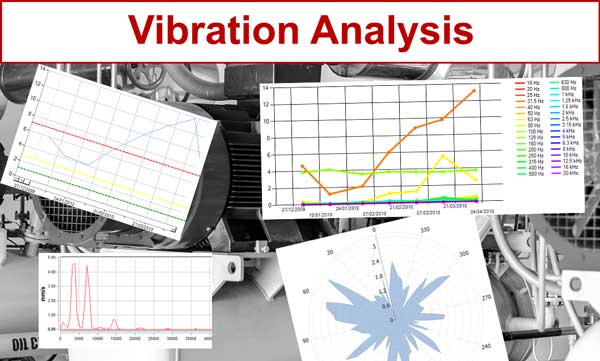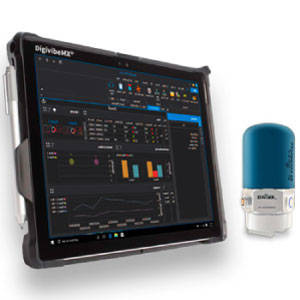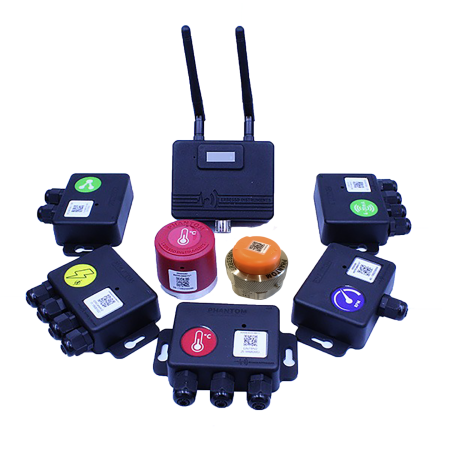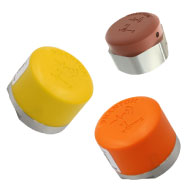10 Principles of Vibration Analysis You Should Know
In the last 20 years the industry has improved predictive maintenance processes and the tools used to perform it. In particular, vibration analysis technology has evolved to unimaginable levels.
What is vibration analysis? And more importantly, what do you need to know to start learning about it? Well, I invite you to read this article to explore it with me.
Vibration Analysis is defined as the technique of measuring vibration to identify anomalies in industrial machinery. Using FFT algorithms, Vibration Analyzers separate vibration signals into amplitude and frequency components to facilitate failure recognition.
Vibration analysis technique is capable of identifying almost all the faults that a machine can have. As a result, occasional analysis needs complementary methods to confirm a diagnosis. The following are the most common faults that vibration analysis identifies:
- Imbalance
- Bearing failures
- Mechanical looseness
- Misalignment
- Resonance and natural frequencies
- Electrical faults in motors
- Bent shaft
- Gearbox failures
- Cavitation in pumps
- Critical speeds
Find the best vibration analysis equipment that matches your needs. If you are interested in How to find the best Vibration Analyzer, click Here.
A vibration Analysis Equipment is an instrument used to measure, store and diagnose the vibration produced by your machines. Vibration analysis equipments use FFT based tools to measure frequencies and identify the causes that originate them. You can find some examples here:
Portable Vibration Analysis Equipment | Digivibe®
Digivibe M30 Vibration Analysis Equipment is an advanced and portable system designed to analyze machinery vibrations individually. On site balancing for 1 and 2 planes.
- Frequency range: 1 Hz – 14 kHz
- Resolution lines: 1,638,400
- Simultaneous input channels: 4
- Balancing capability: Yes
- 3D simulations (ODS)
Wireless Vibration Analyzer | WiSER 3X®
The Wiser 3X triaxial accelerometer also has the Wiser Vibe and Digivibe application compatibility.
- Frequency range: 1 Hz – 14 kHz
- Resolution lines: 1,638,400
- Simultaneous input channels: 4
Permanent Vibration Analysis Equipment | Phantom®
Phantom EPH-V11 is a wireless vibration sensor designed for permanent mounting. Phantom records 3 Axes vibration FFT. Long Life replaceable battery of 2 to 3 years.
- Frequency range: 1 Hz – 10 kHz
- Amplitude range: 32g
- Resolution lines: 6,400
Vibration Experts and developers have made great efforts to create functions that solve the few limitations of vibration analysis, however, there are still some issues that we are unable to see through vibration analysis.
Very High frequency: Common sensors have a maximum frequency of 10 to 15 kHz. If you don’t invest in special sensors, higher frequencies will be invisible to the equipment.
Ultra-low frequencies: Although it is possible to measure very low frequencies, they are often ignored because they require long samples which are not done in a normal route.
Lubricant condition: This is one of the biggest limitations of vibration analysis. The condition of the lubricant cannot be evaluated by this technique, you can only suspect the lack of it.
Vibration Analysis – Basics
Vibration analysis does not require you to disassemble or stop the machine and therefore it is a non-invasive method. In fact, a sensor transforming movement into an electric signal is the principle of a vibration analyzer. subsequently, the analyzer calculates all predefined parameters and then stores this signal.
Vibration Analysis Sensors
The most common sensor used in vibration analysis is the accelerometer, however you may also find velocity transducers and displacement probes. In fact, accelerometers provide a voltage output whose amplitude is proportional to the acceleration of the vibration. Subsequently, the analyzer can integrate this signal to obtain the speed and displacement making the accelerometer the most versatile sensor.
Concept of Vibration
Rotating machinery produces vibration during its normal operation as a consequence of friction and centrifugal forces of both the rotating parts and the bearings. As a result, Vibration can be measured, recorded, trended, and in most cases even heard. Thus, we define vibration as a repetitive movement around a point of equilibrium characterized by its variation in amplitude and frequency. Both the amplitude and the frequency are used in countless essential calculations for diagnosis.

Definition of Amplitude
The amplitude is the maximum extension of the oscillation and it is measured from the lowest point to the highest point of the waveform. In fact, Amplitude is related to the amount of movement. On the other hand, the RMS value (Root Mean Square) describes the amount of energy contained in this vibration. RMS is the most used parameter to measure the intensity of the vibration.
What is Frequency?
Frequency measures the rate at which movements in vibration occur per second Hz (or per minute CPM). Imagine a piano, provided that each note corresponds to a frequency, if you press several keys you will hear a composite sound. The frequencies and amplitudes of each note are combined to create a complex signal. Similarly, vibration can be a composition of multiple frequencies which each one of them can obey to a different cause. In the same way, think that the number of components of a vibration signal can be as big as the keys on a piano because every mechanical part has its own vibrational pattern. Therefore, every machine will have its own vibration footprint, and it is the job of a vibration analyst to identify problems inside that footprint.
What is FFT?
The FFT (Fast Fourier Transform) is a mathematical calculation intended to decompose a signal into all its frequencies. FFT chart provides the possibility to diagnose faults based on frequencies and evaluate the intensity of each one of them based on the amplitude.

The FFT is the fundamental unit of vibration analysis.
Vibration Measurement parameters
Vibration Analysis techniques identify 3 major measurement parameters. Each one of these parameters gives particular importance to certain ranges of frequencies.
Acceleration gives higher importance to high frequencies. It is useful to see bearing condition.
Velocity gives equal importance to high and low frequency. It is related to the destructive force of the vibration and therefore the most important unit available.
Displacement prefers low frequencies. It is useful for during dynamic balancing, orbits and ODS (Operating Deflection Shapes).
Observe the spectra below. They all belong to the same signal. Notice that you will see peaks at the same frequencies, but with different amplitudes in each one of them. Additionally, observe how every parameter assigns different importance to frequency ranges.
Acceleration

Velocity

Displacement

Maintenance plans
Vibration Analysis in corrective maintenance aims to diagnose and correct an existing vibration problem.
On the contrary, in predictive maintenance the objective is to predict faults generating trending the vibration and identifying its behavior over time.
Can Vibration Analysis predict failures? – Predictive Maintenance
Yes, in most cases at least, we can predict failures. Let’s make an analogy.
Did you ever take your car to the mechanic because you noticed a new noise, or because a noise that was already there is getting louder?
Unconsciously by taking this decision you are predicting a failure. You know that if you do not take the car to the mechanic the car will eventually leave you stranded. And that is your prediction. In predictive maintenance the principle is the same, but unlike cars, we are not always close to the machines to be able to hear the noises or feel the vibrations, not to mention most of them are inaudible. Therefore, vibration analyzers accurately trend the amplitude of these “noises”, and even better, they are capable of identifying the source of this raising “noise”.
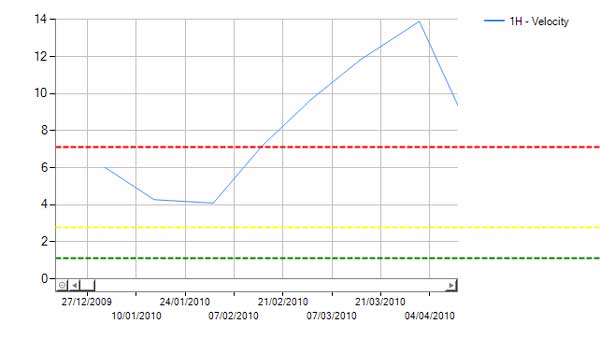
Proactive maintenance
Proactive maintenance is a new trend that aims to not only predict downtimes, but it also accurately specifies the failures that will cause them.
There are several approaches for this, but they are all based fundamentally on tracking which frequencies are responsible in vibration changes. A normal spectrum usually has 400 to 200,000 points, and tracking over time every single one is complicated.
Octave Bands are simplified FFT spectra with a standard number of lines, usually between 8 and 32. In this way, octave bands are very useful for tracking small amount of segments of FFT over time. Hence, identifying faulty components is much easier.
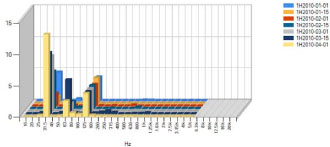
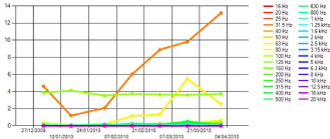
Vibration Analyzers
New generation of vibration analyzers has evolved with easy to use complex features like 3D simulations or GearBox analysis. Additionally, these analyzers integrate millions of resolution lines and automated routes recording, making our lives much easier. If you are interested in reading about how to choose the best vibration analyzer read this post.
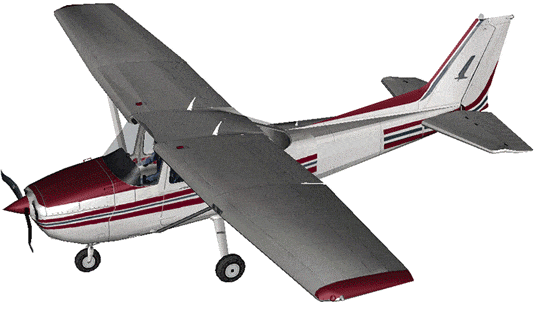
Wireless Accelerometers
The new era of technology has allowed wireless accelerometers to communicate with almost any device such as smartphones and tablets. Despite the big bandwidth these wireless triaxial accelerometers require, they are capable of sending 3-axis simultaneously in real time and even with the possibility of adding a fourth channel for phase analysis and balancing.
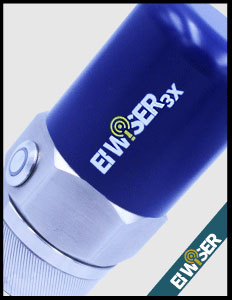
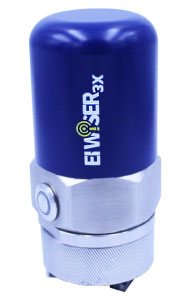
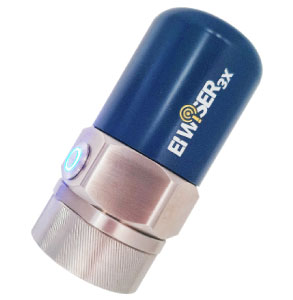
IOT Internet of Things in Vibration analysis
Devices with a size of a golf ball are now capable of sending vibrations wirelessly for 3 to 6 years without changing the battery. By only gluing the base and configure it in the software you will be all set to start analyzing through the cloud or directly on your Smartphone. Additionally, this technology now also includes temperature sensors, current RPM and many others that integrate new parameters within the same analysis.
New web technology and progress in telecommunications now allow us to send recorded data on Smartphones or through IOT devices to the cloud in order to automate them and share them with distant expert analysts for further analysis.
In the Same way, cloud data allows us to easily share information with the end user to facilitate decision making. Automated reporting is now available with customizable tools that allow users to see exactly what they need.
Cloud based maintenance is a tendency just like everywhere else in our lives.
A good example of cloud based Vibration Analysis is EIAnalytic.com
Learning now from cloud-based vibration analysis systems is very important since it will become more and more complex.
New algorithms for self-learning machinery patterns are growing and becoming more popular. These algorithms measure RMS values over a period of time to then evaluate which range of values is normal for that particular machine. Hence, these systems are able to inform whenever the vibration of the machine exceeds the maximum.
Another way of learning is by creating automatically an envelope alarm over an average of FFTs (see picture). After defining a normal envelope limit, the systems are able to detect whenever a particular frequency on the spectrum reaches a limit.
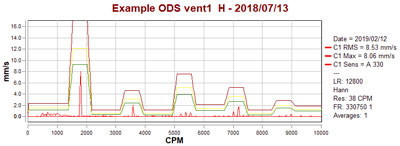
These algorithms are already making vibration analysis much easier leaving tough tasks to computers. These systems significantly reduce the workload for vibration analysts and allow them to focus on things that really deserve their time.
How will these new technologies impact our lives?
Definitely, these new technologies will greatly change the way we see vibration analysis today. Not only will they make life easier for us in terms of routine work, but they will also allow our knowledge to grow even more in terms of vibrations and their relationships with other parameters.
The sooner we adopt these technologies the longer we will have to learn their potential. Adapting our way of thinking is crucial in this environment that changes with such speed.
The study of vibrations is a discipline that began almost 100 years ago and only became available to common industry less than 4 decades ago. Ever since, vibration analysis has evolved along with digital technology forcing it to continuous evolution. New technologies constantly create new challenges for both, those who develop and for users.
Vibration analysis algorithms will evolve and become even more accurate and reliable. We will see in a very short time this type of sensors on every machine.
Dr. Thierry Erbessd, a prominent Mexican entrepreneur, and graduate of the National Polytechnic Institute has revolutionized the field of Vibration Analysis, Dynamic Balancing, and Condition Monitoring. Through his innovative software DigivibeMX®, DragonVision®, and WiSER Vibe®, he has set a before and after in the industry. As president of Erbessd Instruments®, he has not only led the company to the top of the global industrial maintenance industry but has also expanded its influence with strategically located offices in America, Europe, and Asia, establishing himself as an undisputed reference in industrial maintenance solutions worldwide.
ERBESSD INSTRUMENTS® is a leading manufacturer of Vibration Analysis Equipment, Dynamic Balancing Machines, and Condition Monitoring with facilities in Mexico, the USA, England, and India


